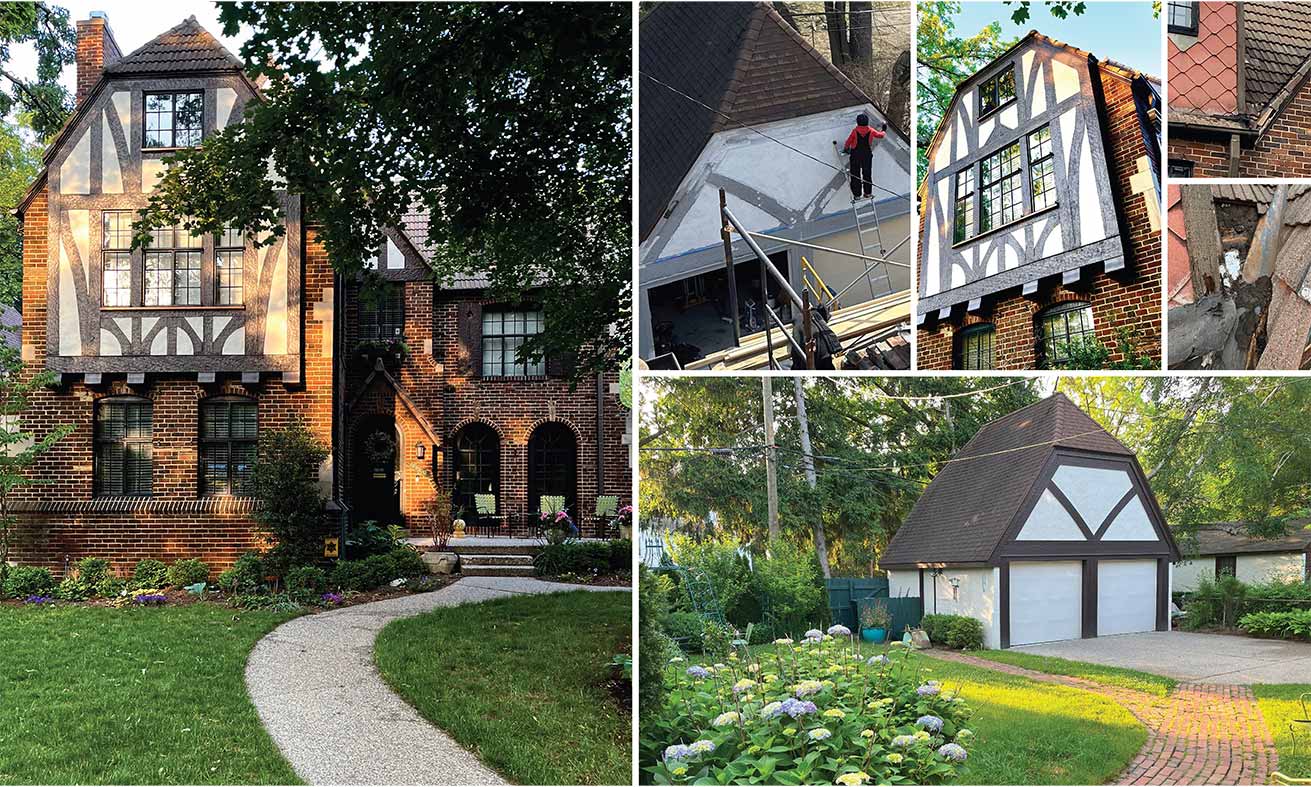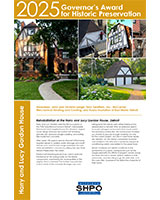Thousands of Resources, Ready to help.
Advantages
Popular

Gordon House, Detroit
Rehabilitation of the Harry and Lucy Gordon House, Detroit
Harry and Lucy Gordon were the first occupants of this 1926 home in Detroit’s fashionable Sherwood Forest neighborhood. Tudor Revival was a signature style in the neighborhood, named for the English region made famous by the Robin Hood story and echoed not only in the architecture but also in the street names and large trees which grow here. The Gordons’ original house design featured decorative half timbering, dormers with diamond shingle cladding, and roofing tiles made from concrete.
After nearly 100 years in service, the roof of the home required repairs to address water infiltration and runoff that were beginning to damage other materials. Owners John and Victoria Lange utilized the new State Historic Preservation Tax Credit to offset 25% of the expense.
Flashing was replaced with copper at valleys, ridges, and eaves to address water intrusion where it was occurring. Intact existing roofing tiles were carefully removed and reinstalled to allow for repairs to the flashing and decking below.
Some of the concrete tile ridge caps and raking eave trim pieces were either missing or too deteriorated to reinstall. After an extensive search to locate salvaged components that would match the remaining roofing tiles, the homeowners drove out of state to procure enough materials not only for the current project, but also in case future repairs are needed.
Damaged or missing shingles on the dormer walls were replaced with an alternate material, since the original materials are no longer available. Cement board was selected as a compatible substitute in this situation because it matched the thickness of the original shingles, provided durability in a location that is highly exposed to the elements, and was easily cut to replicate the diamond shape of the historic shingles. The finished result blends with the existing materials and maintains the distinctive fish scale pattern created by the shadow lines of the overlapping shingles.
At the exterior walls, deteriorated wood elements were patched or selectively replaced. The half timbering repairs took care to replicate the texture of the tooling marks on the historic components, maintaining the visual qualities of the original. Stucco between the timbers was also patched in-kind.
On the interior, compatible insulation was installed in the attic and a sensitively placed air conditioning system was added to the second and third floors, improving the comfort and energy efficiency of the home with minimal visual impact.
Historic materials and details contribute to the authenticity of a place. Homeowners such as the Langes exemplify the efforts of property owners across the state who live in historic districts, believe in their community, and are willing to go the extra mile, or in this case miles, to preserve the distinctive character of their home.

The Governor’s Awards for Historic Preservation recognize standout projects across both peninsulas, exemplifying the collaboration and deep impact preservation can have in Michigan communities. Congratulations to: John and Victoria Lange; Terry Swafford, Inc.; McCarver Mechanical Heating and Cooling; and Koala Insulation of East Metro Detroit.

Read More
View PDF